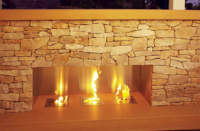The Bundesanstalt für Materialforschung und –prüfung (BAM) is involved in a new project which investigates the use of earth block masonry (EBM) for sustainable housing construction. The research aims to examine the load-bearing behaviour of EBM in terms of failure mechanisms to ensure the design complies with the generally applicable masonry standard, DIN EN 1996/NA. The project, in which the Technical University of Darmstadt and ZRS Ingenieure GmbH are also involved, is technically and financially supported by the Deutsche Bundesstiftung Umwelt (DBU).
The Bundesanstalt für Materialforschung und –prüfung (BAM) is involved in a new project which investigates the use of earth block masonry (EBM) for sustainable housing construction. The research aims to examine the load-bearing behaviour of EBM in terms of failure mechanisms to ensure the design complies with the generally applicable masonry standard, DIN EN 1996/NA. The project, in which the Technical University of Darmstadt and ZRS Ingenieure GmbH are also involved, is technically and financially supported by the Deutsche Bundesstiftung Umwelt (DBU).
In light of the ever-increasing need for housing, ecological construction is becoming ever more significant. New apartments and houses must be as resource-saving as possible. “As a natural building material, earth offers numerous advantages,” says Dr Marc Thiele, Project Leader in the Buildings and Structures Division at BAM. Earth requires a minimum amount of primary energy, is available almost everywhere and is 100% recyclable. Due to its high mass, it also offers excellent sound insulation properties and is non-flammable.
Intensive research work on earth construction – including that at BAM – has led to the introduction of product standards in Germany for earth blocks, earth mortar and earth plasters in 2013 and for loam boards in 2018. In the field of earth plasters, they have already been successfully integrated into the general application standard for plaster mortars. Earth blocks and earth mortar must also achieve this to enable the broad application of EBM based on the generally applicable design regulations.
The project aims to expand the already extensive knowledge on the load-bearing behaviour EBM so that a simplified design of EBM, similar to the conventional masonry design standard DIN EN 1996/NA, is possible. Preliminary studies have revealed that the load-bearing behaviour and bearing capacity of EBM are comparable to those of conventional masonry. Thus, today, the quality of earth blocks and mortars available on the market and produced in factories is of the same quality as conventional bricks and mortars.
Within the scope of the planned project, the existing experimental investigations on the blocks and mortar will be extended, and extensive investigations on building elements will be carried out. Based on these results, building material properties (strength, modulus of elasticity, deformation properties) and their statistical characteristic values can be determined. Subsequently, the required reliability level can be calibrated and thus integrated into the safety format of current masonry standardisation.












